I love the desert, so much so when I learned about the White Desert in Egypt I immediately changed my plan to accommodate a trip out here. No regret. While Egypt is mostly known for incredible man-made sites such as the Sphinx and the many pyramids, the White Desert is offers utterly breathtaking natural landscape. In fact, visiting the White Desert was the highlight of my trip to Egypt.
I slept under the stars on what used to be an ocean floor, millions of years ago (if you look closely, you’ll find shells on the ground). Guarded by white towering sentinels, carved by sand and wind. There was no pollution, no crowd of people. It was Egypt as I’d never seen before. I can keep going on and on, but the pictures will speak for themselves although they don’t really do this place justice.
Where is the White Desert
The White Desert National Park is located within the Farafra depression in Western Egypt. Most trips start from the town of Bawiti in Bahariya Oasis, about 5 hr drive from Cairo.
A rest stop on the long lonely road to Bahariya Oasis
How to Visit Egypt’s White Desert
The White Desert can be visited as an overnight trip from Cairo. We left Cairo at 7am, stayed the night at the desert, and were back in Cairo at 5pm the next day.
From Cairo: 7:30am and 4:30pm bus to Bawiti from Torgoman bus station. I didn’t do this so I can’t say what the journey is like.
What I did: I arranged a private transport with Desert Home Safari. Through a miracle of Internet and timing, I ended up sharing the trip and transfer with someone I met on a travel forum. We were picked up at Cairo airport (she flew in from Aswan, I flew in from Khartoum) and the private car to Bawiti cost 50 euros one way.
Desert Home Safari organizes trips to the desert. Mohammed Khozan and his family has been running the tour agency for 40+ years. They’re lovely people who will take good care of you.
After lunch, we got in a 4×4 and headed out the desert stopping at various spots of interest. A common White Desert itinerary includes spots such as:
The Black Desert
The Black Desert is a unique landscape dotted with volcano-shaped cones. The orange desert sand that forms the cones are covered with layers of black stones. We hiked up one of these to get an aerial view of the area. I’m not sure where these black stones came from and why they only exist on the cones (and not on the ground).
The black stone covered hills of Black Desert
Crystal Mountain
The next stop is Crystal Mountain. A misnomer, this limestone ridge is unique due to a huge crystal vein running through it. I’d seen crystal veins before but never at this scale. Blocks of crystal columns jut out from the rocky ridge and there are large, broken pieces of crystals scattered all around the area.
Past visitors have been breaking and taking crystals home. As a result, Crystal Mountain isn’t as impressive as it used to be. Please, please keep this place special by not taking any more crystal from the area.
Columns of crystals in Crystal Mountain, Western Desert region of Egypt, Flickr
Agabat Valley
As our jeep climbs up a steep and sandy saddle the Agabat Valley reveals itself below us. Our mouths dropped. In front of us red towers rise out of the valley floor, glowing in the late afternoon sun. So beautiful.
The multi-day version of the White Desert trip explores this wonderful valley even further. I wish I had time to do that.
Agabat Valley, Egypt
White Desert
We made our way to the White Desert proper where we’re going to set up camp for the night. The landscape now has taken on an otherworldly quality. White chalk deposits have been carved by wind and sand into waves, towers, and tiny ant hills, reflecting the pink and purple of the setting sun.
Wave-like formations, almost like snow.
Wind and sand carved these formations out of soft chalk deposit.
Sunset and sunrise is the best time to capture the magic of the place.
Overnight in the White Desert
We finally arrived at our campsite for the night. We met up with another car carrying a couple of American tourists. It turned out that no only do we live in the same state back home, we live only 20 miles apart. The guides set up a dining area and a makeshift kitchen. Dinner was delicious: BBQ chicken, tomato stew, rice, and salad. Then again everything tastes better outside, don’t you think?
After dinner we gathered around the campfire singing tunes using a makeshift drum out of plastic container. Conversations turned into politics. We bonded over the crisis of democracy that’s currently facing both of our countries. Regardless of countries, dissatisfaction with your government is the common thread that binds us all together.
Desert Safari Home provided tent, padded mattress, and sleeping bags with blankets (I recommend bringing a sleeping bag liner). After ascertaining that there were no scorpions or snakes that I needed to worry about, I opted to sleep en plein air because I wanted to see the stars. And oh my lord, the stars! I remember waking up because the pre-dawn chill, looking up and saw the whole expanse of the universe bearing down on me. Reminded of my own insignificance and somehow comforted by it, I fell right back to sleep.
Our makeshift dining area-slash-kitchen.
Our camp in the White Desert.
The mushroom and the chicken
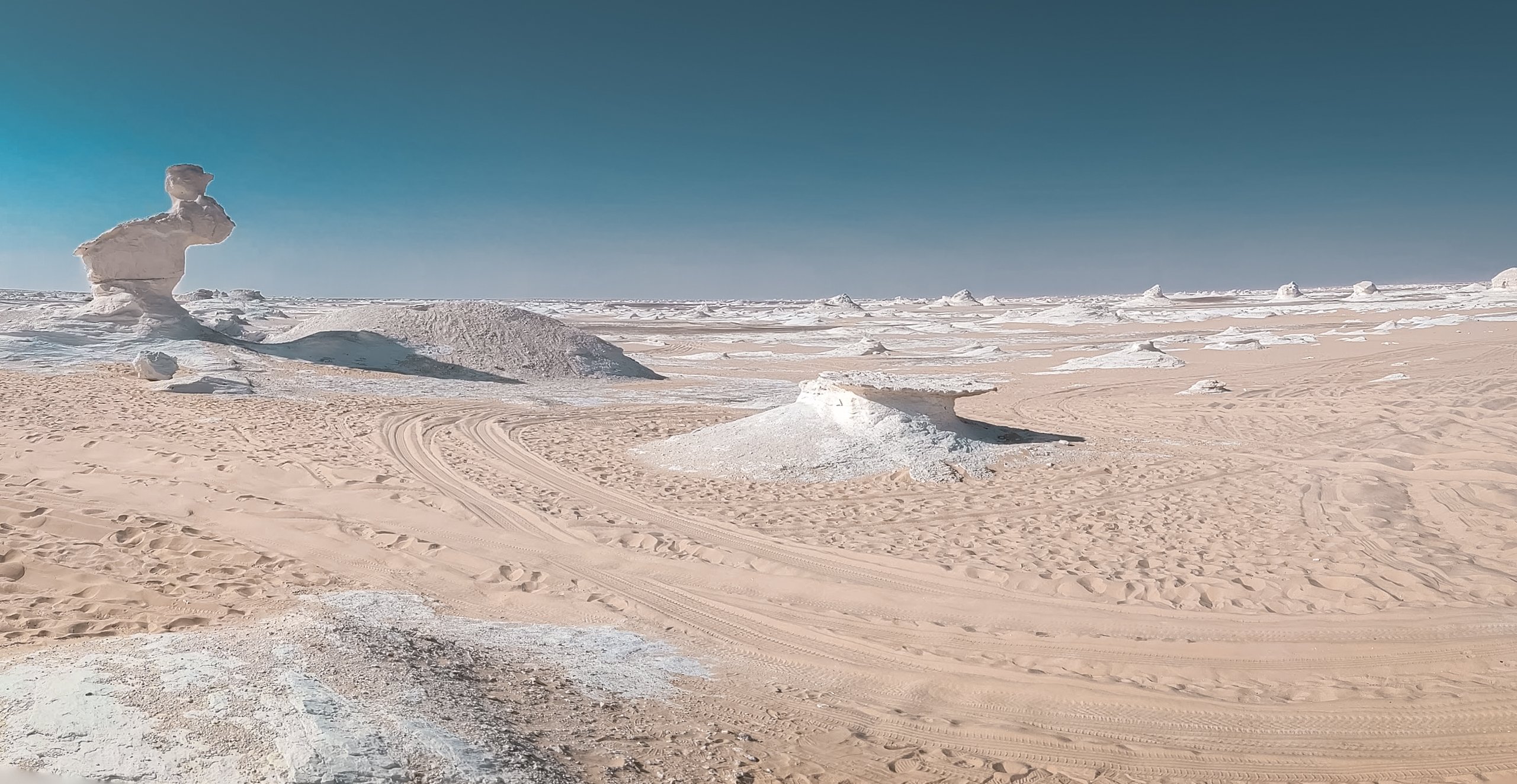
The Rabbit
After breakfast, we broke camp and started the drive back to Bawiti. On the way, we stopped at some of the more famous formations (like the “mushroom and chicken” rock, see above) as well as one of the hot springs in the area. (I would’ve enjoyed the hot spring better if it wasn’t like 35 degree Celsius out, lol).
Look closely and you’ll find shells embedded in the white chalk formations.
The chalk sentinels
Should You Visit the White Desert?
Before the Arab Spring, the White Desert was often in many visitors’ itinerary. However visitation has dropped significantly and hasn’t recovered, a story repeatedly heard during my short time in Egypt. But it has hit the Western Desert area the hardest.
“Before you’d see 100 visitors a day, it was normal. Now, if you see 2-3 cars it’s crowded,” my guide said ruefully. He blamed the misinformation online that travel to the White Desert is forbidden or dangerous. Many residents have instead turned to farming, hoping that one day soon visitors will come back.
But you shouldn’t visit the White Desert solely to revive the local economy. You should visit the White Desert because it’s a beautiful and unique place, a respite from chaotic metropolitan Cairo and tomb-raiding tour groups.
You can truly breathe out there.
Note (Nov 2019): I’d personally hadn’t heard anything about the safety issue of White Desert. But when I got home, I looked up if it’s safe to visit White Desert and there were some older threads about tour agencies not offering trips anymore, permits being required, etc. Nothing official, however. It seems situation is fluid and kind of on the whim of local officials. We personally had no issue and there were no checkpoints whatsoever.
How to Visit the White Desert, A Recap
Get yourself to Bawiti. Either by taking a bus from Cairo (7:30am and 4:30pm from Torgoman bus station) or a private transfer (which is what I did). Join an overnight White Desert tour using 4×4 (150-180 euros per car). Multi-day tours are also available.
Where to stay/organize a trip: Desert Home Safari
What to bring: all food/water, sleeping bag, and tent is provided. I recommend a sleep sack
Related: I wrote about Luxor, my Egypt itinerary and travel tips here.


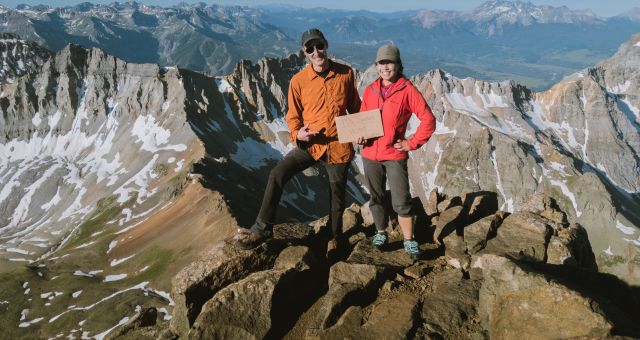
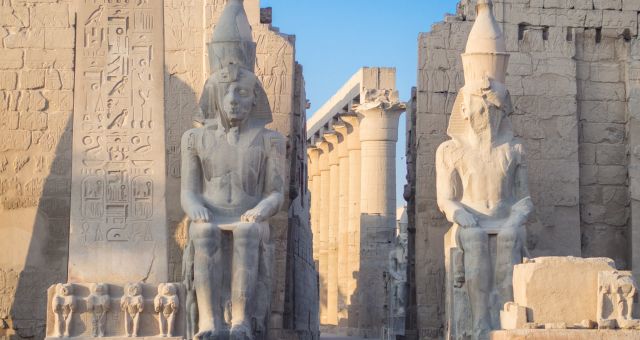
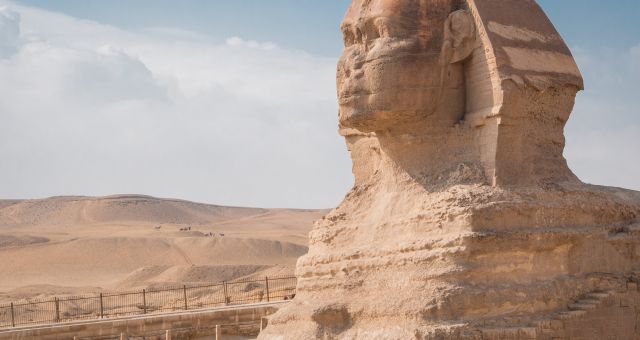
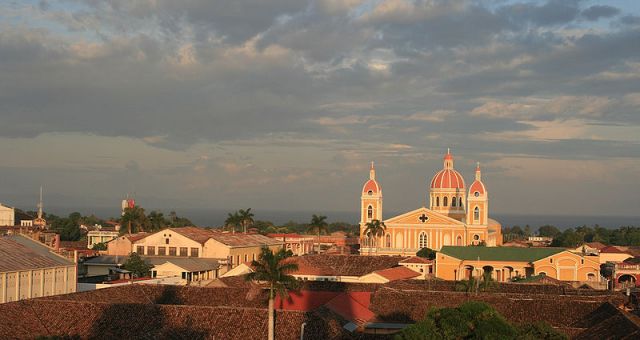
Questions and Comments
Comments are disabled. If you have any questions about the post, you can DM me on Instagram: @jacknjilltravel.